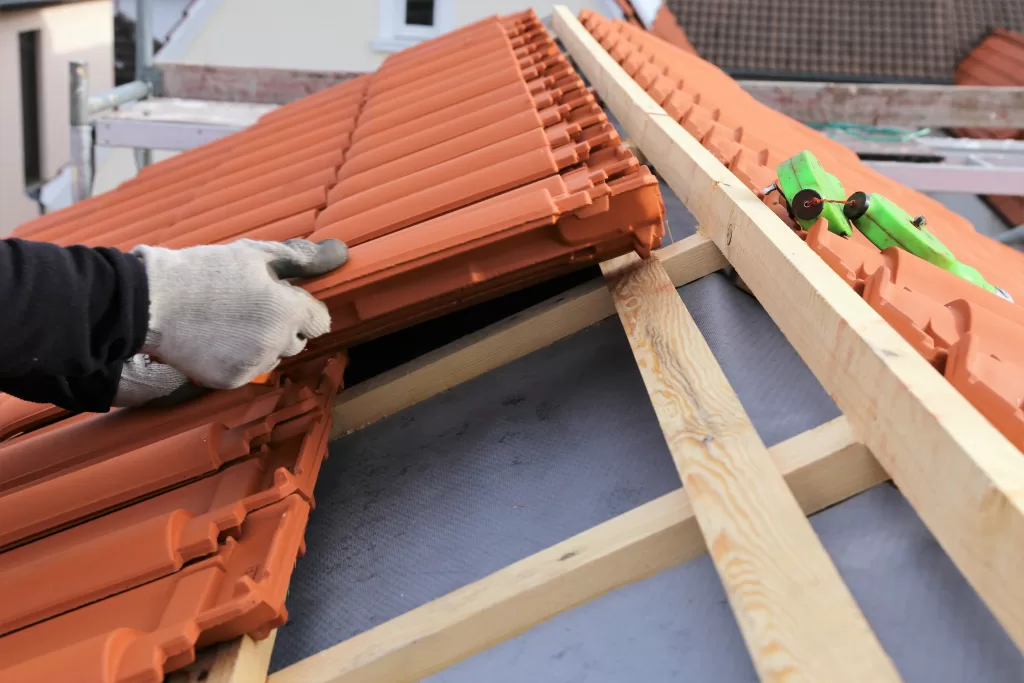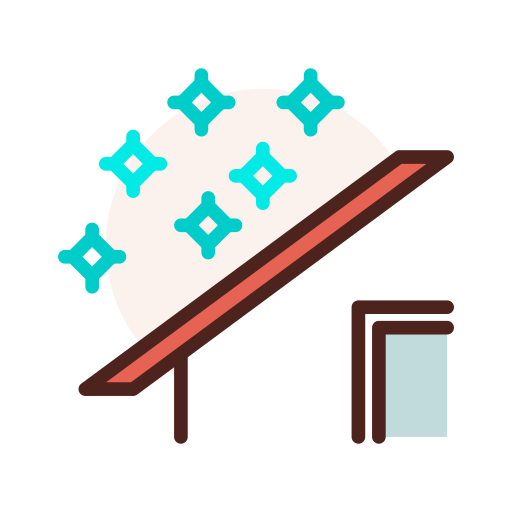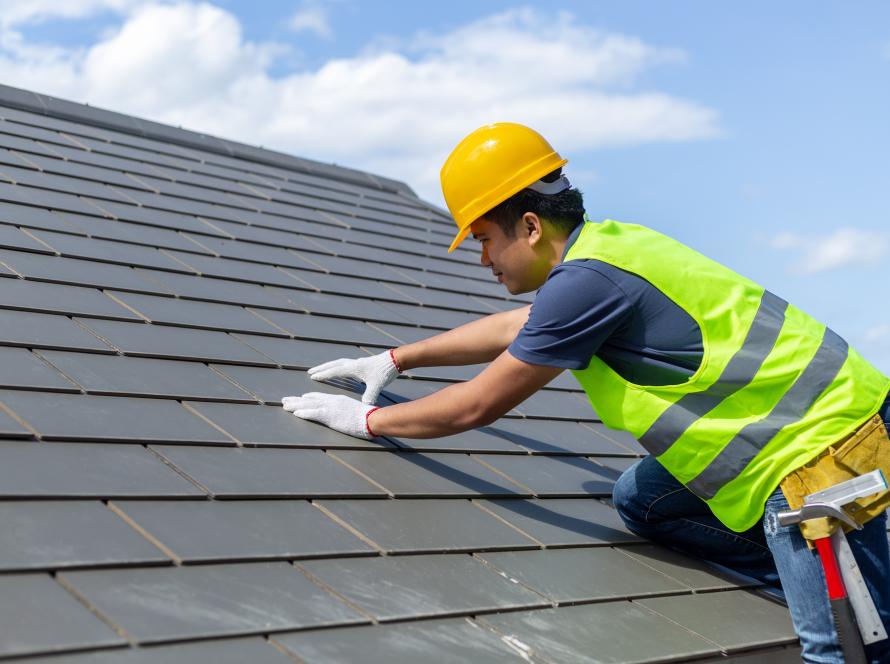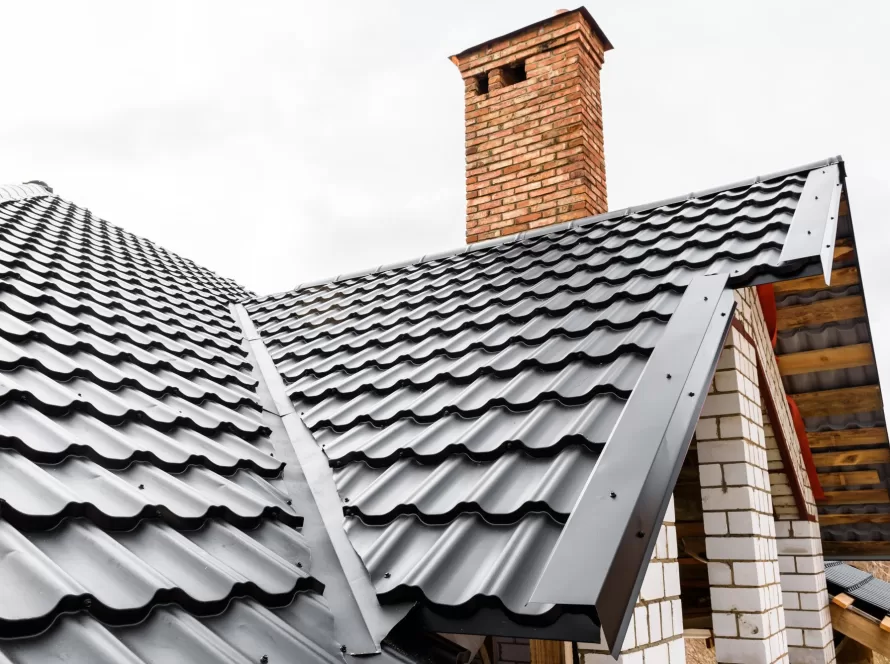Is your roof missing shingles? Is it sagging? Is it over 25 years old?
If you answered yes to any of the above, it might be time for a roof replacement. Sometimes homeowners choose repair over replacement to save money. But delaying roof replacement can lead to severe consequences.
While it doesn’t consistently rate high on the list of exciting home remodeling projects, a tightly sealed roof provides protection and can improve your home’s curb appeal.
But with so many different types of roofing available, which material to choose?
In this guide, we’ll unpack some of the most common types of roofing to help you decide.
Types of Roofing

Homeowners rarely think about what type of roofing they want when it’s time for a roof replacement. Most default to asphalt shingles because they’re easy to find, affordable, and versatile. But it’s important to consider what type of roof will suit your home, the climate you live in, and what will fit your budget.
Here are some of the most common types of roofing and the pros and cons of each.
Shingles
Shingles are the most popular type of roofing material in American homes with pitched roofs. They are flat, rectangular pieces of asphalt, fiberglass, or composite material. Asphalt shingles are the most affordable as far as installation and lifespan go.
When installed, shingles are laid in an overlapping pattern beginning from the bottom edge of the roof. They form horizontal rows that create an aesthetically-pleasing design. Shingles suit almost all types of homes and are available in various colors and styles.
Another reason why asphalt shingles are popular is their immunity to moisture damage and how easy they are to repair.
Pros:
- Easy to install
- Low cost
- Long lifespan
- Fit any style of home
- Improve curb appeal
- Easy to replace
Cons:
- Susceptible to wind damage and mildew growth
- Not environmentally friendly
- High maintenance
- Can crack
- Aren’t unique
Rolled Roofing
Rolled roofing is a material commonly used for buildings with a low sloped roof pitch. It is a mineral-surfaced oil-based product that is available in rolls. Each roll weighs about 75 pounds and is developed to be laid into strips that overlap each other.
As one of the more affordable options, rolled roofing is popular for home and business owners on a tight budget. It’s important to note that rolled roofing should not be hammered onto flat roofs. This may cause water leaks, something you do not want.
Rolled roofing comes in a few different types, including rubber rolled roofing, EDPM rolled roofing, and bitumen rolled roofing. The latter type of rolled roofing can last for up to 20 years or more when installed properly.
Pros:
- Easy to install
- Compatible with low sloped roofs
- It does not require an underlayment
- Can be easily transported
Cons:
- Quality may not compare to more expensive options
- Shorter lifespan
- Missing the aesthetic appeal
- Lack of durability
Metal Sheet Roofing
Metal sheet roofing is a lightweight building material that provides a modern aesthetic to your home. Aluminum roofing is fast becoming one of the best metals for many roofing systems. That’s because it is durable, versatile, and lightweight.
When properly maintained, an aluminum roof can last 50 years or more. It will also retain its appearance, and it is more resistant to rust and rot.
The primary type of metal roofing is sold in sheet-like panels typically joined by standing seams or rolled joints. This type of material was commonly used in industrial buildings. However, homeowners are embracing the metal sheet look as the industrial warehouse style becomes increasingly popular.
Pros:
- Low-maintenance
- Durable
- Eco-friendly
- Lightweight
- Quick installation
Cons:
- Noisy during inclement weather
- High initial cost
- Dent easier
- Modifying panels can be difficult
Wood Roofing
As the name suggests, wood roofing is made of wood split into thin rectangles from a wooden log. They are typically made from natural cedar wood (typically found on Cape Cod-style homes) or redwood. Wood roofing is primarily used to cover roofs to protect them from the weather.
When it comes to wood roofing, you can choose between shingles and shakes. Shingles have a flat, thin profile that creates a uniform pattern across the roof, similar to asphalt shingles. Shakes are produced by splitting wood to create larger wedges with a rougher texture.
Wood roofing will give your home a warm, appealing appeal and can last around 50 years in dry climates. However, they need to be treated in fire-prone areas such as California, and they will not last as long in wetter climates due to water damage.
Pros:
- It provides a classic, traditional look
- Durable
- Superior insulation
- Natural material
- Lightweight
Cons:
- Susceptible to water damage, pests, and fire
- May require treatment
- High maintenance
- Higher upfront costs
PVC Roofing
While you may be unfamiliar with PVC roofing, it is an increasingly popular material as it offers excellent UV protection and won’t discolor in the sun. PVC stands for Polyvinyl Chloride and is made up of ethylene and chlorine.
PVC roofing is a single-ply roofing membrane best suited to flat or low-slope living spaces over a bedroom or a living area. It can be installed by heat welding the seams due to its stable and robust material. As a robust material, PVC offers protection against chemicals, fire, and high wind speeds.
PVC roofing is a viable and affordable option if you are on a tight budget.
Pros:
- Strong and long-lasting
- Resistant to chemicals, fire, and hail damage
- Available in a variety of colors
- Versatile
Cons:
- Requires complete removal of your old roof
- Not suited to colder climates
- Can release toxic chemicals during manufacturing
Tile Roofing

Tile roofs are made from natural raw materials, typically clay or concrete. They are primarily made to keep water out of homes and are a great way to customize a home. Roof tiles can vary in budget, durability, weight, and appearance.
Some of the most popular types of roof tiles include slate, metal, concrete, composite, solar, and clay. Generally speaking, clay tiles are a popular tile choice because they are available in various styles like Spanish, French, Scania, and more.
Clay tiles are commonly seen in Southern California and Florida because they are ideal for warmer climates and are incredibly fire-resistant.
Pros:
- Long-lasting
- Durable
- Low-maintenance
- Great curb appeal
- Made from natural materials
- Regulates temperature inside the home
Cons:
- Can be expensive
- Prone to cracking in cold temperatures
- Heavy material
- Tiles may get dirty
Green Roofing
As you drive through your neighborhood, you will unlikely see an eco-friendly green roof. But that may change as the world moves toward a greener and more eco-conscious future. Green roofing is a roof that is partially or wholly covered with vegetation.
A green roof or ‘eco roof’ aims to achieve environmental benefits such as reducing stormwater runoff, saving on energy use, and encouraging biodiversity. Green roofs are popular in heavily dense locations such as cities, where it adds a pop of color to the otherwise grey, concrete environment.
When properly maintained, green roofs can last between 30 to 50 years.
Pros:
- Durable
- Supports the environment
- Improves drainage system
- Increases the lifespan of the roof
- Boosts thermal performance
- Supports wildlife habitats
Cons:
- Cost of installation
- Requires extra maintenance
- Increases weight load
- Limited choice of plants
Solar Shingles
Solar shingles are one of the newest trends in roof materials. As the name suggests, solar shingles are panels designed to look and function like conventional roofing materials such as asphalt shingles. They are made of slim photovoltaic (PV) sheets and directly generate electricity from sunlight.
They protect your roof just like ordinary roofing materials and have the same flexibility and durability as regular shingles. Each solar shingle generates between 13 and 63 watts of energy. They are also lightweight, easy to install, and withstand rain, wind, and hail.
For energy-conscious homeowners, solar shingles will make a great addition to your home.
Pros:
- Energy-efficient
- Eco-friendly
- Fire resistant
- Long life expectancy
- Aesthetically pleasing
- Innovative technology
Cons:
- Initial expensive costs
- Still being developed and tested
- Require very technical installation
- Repairs are costly
The takeaway

Compare Quotes from Top-rated roofing contractors in your area.
From tile roofing and metal sheet roofing to PVC roofing and rolled roofing. There is a roofing material to cater to every homeowner’s budget and design taste.
Alpha Living’s network of Roofing professionals can help you make an informed decision and ensure your new roof is secure to protect you and your family year-round. Tap here to get started!





Facebook
Comments